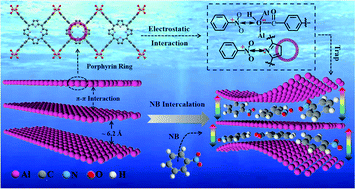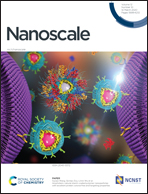A layered aluminum-based metal–organic framework as a superior trap for nitrobenzene capture via an intercalation role†
Abstract
Layered materials with porous layers are of great interest due to their intriguing structural topologies and potential applications as new adsorbents. In this study, a layered aluminum-based metal–organic framework, i.e. Al-TCPP, was successfully synthesized via a facile method for the adsorptive removal of nitrobenzene (NB). The as-synthesized Al-TCPP exhibited a typical layered structure and can be stable in water at pH = 5–7. Batch experimental results showed a superior adsorption performance towards NB with a maximum adsorption capability of 1.85 mg mg−1, and an exceptionally rapid equilibrium within 1 min, yielding an overall adsorptive performance superior to the state-of-the-art NB adsorbents reported so far. The morphology and crystallinity of the Al-TCPP adsorbent basically retain the original status after the capture of NB. Importantly, X-ray diffraction patterns of the samples after the NB adsorption revealed that the possible NB intercalation took place in layered Al-TCPP and expanded the interlayer space during the adsorption, which greatly enriched the adsorption sites and thus achieved the outstanding performance. This work highlights new prospects in designing layered materials for use in environmental remediation.



 Please wait while we load your content...
Please wait while we load your content...